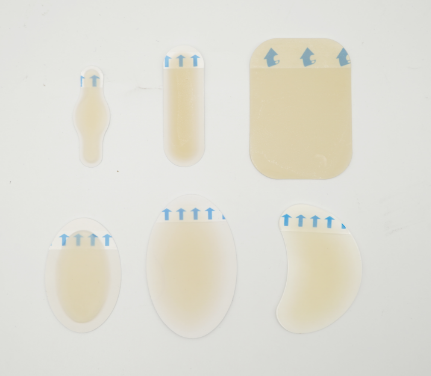When the body is traumatized, the immune system releases chemicals that cause an inflammatory response. This response helps protect and repair the wound, but it can also be accompanied by pain. This article will discuss the relationship between wound inflammation and pain.
wound inflammation
Wound inflammation is the immune system's response after trauma. This response involves the aggregation of white blood cells and other immune cells, which release chemical mediators and growth factors to promote wound healing. The inflammatory response can cause pain and discomfort as it involves damage to nerve and muscle tissue.
In wound inflammation, white blood cells and other immune cells are attracted to the wound site, causing tissue damage and destruction. This response results in tissue damage, which can also cause pain. The inflammatory response can also lead to aggregation of plasma and platelets, which help stop bleeding.
pain and inflammation
Pain is one of the main symptoms of inflammation. When the body is traumatized, the nervous system releases neurotransmitters to cause pain. These neurotransmitters include endorphins and dopamine, which can affect the perception and transmission of pain.
The relationship between inflammation and pain is very close. Inflammation can cause pain, and pain can also promote inflammation. When the body is traumatized, the immune system releases chemical mediators and growth factors that can cause pain. In addition, when immune cells infiltrate the trauma site, they can also cause pain.
Treat wound inflammation and pain :
Approaches to treating wound inflammation and pain vary from case to case. For mild inflammation and pain, non-drug treatments may be more effective, such as heat, cold, rest, and treatment with Silver Ion Dressing. For severe inflammation and pain, treatments such as physical therapy, medication, and surgery may be needed. Proper rest and heat can help reduce pain and discomfort while the wound is healing. In addition, the use of anti-inflammatory drugs and pain relievers can also relieve pain. However, care should be taken with the dose and frequency of the medication when using these medications to avoid side effects. Implementing a "painless" dressing change strategy can also help patients manage their pain. Various types of dressings can help relieve pain, including hydrogels, alginate dressings, hydrocolloids, foams, and transparent films. Some of these dressings have the advantage of longer wear (hydrocolloids, foams, transparent films, alginates) and soothing effects (hydrogels).
1. timely dressing change
2. apply wound protectant
3. Use warm saline/non-cytotoxic detergent
4. uninstall
5. avoid tape
6. Use Shear Dressings
7. Take pain medication around the clock or 30 minutes before dressing changes
8. Use distraction techniques and pauses
9. use moist wound therapy
10. Talk to the patient about the dressing change process
To sum up, there is a close relationship between wound inflammation and pain, and the methods for treating wound inflammation and pain vary from case to case. Proper rest and heat can help reduce pain and discomfort while the wound is healing, along with anti-inflammatory and pain relievers. But you need to pay attention to the dose and frequency of the drug to avoid side effects.
For more information on Innomed® Silver Ion Dressing, refer to the previous articles. If you have customized needs, you are welcome to contact us; we will serve you wholeheartedly. At Longterm Medical, we transform this data by innovating and developing products that make life easier for those who need loving care.
Editor: kiki Jia
Date: May 25, 2023

 English
English عربى
عربى Español
Español русский
русский 中文简体
中文简体








